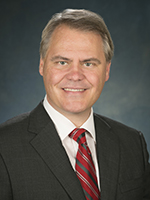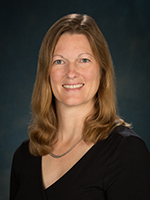
Research pinpoints what makes a better principal
Student test scores improve when principals and their teachers collaborate regularly to improve instruction, according to a landmark study by Ohio State University researchers.

In a study of 93 schools, lead researcher Roger Goddard found that the principal’s role was vital in creating a culture of collaboration that in turn improved teaching practice and student achievement.
“School leaders who focused intentionally on planning time for teacher collaboration to improve instructional practice had higher levels of student learning than those who did not,” said Goddard, professor and the Novice G. Fawcett Chair in Educational Leadership at Ohio State’s College of Education and Human Ecology. “The more teachers collaborated, the more positive the school climate was and the greater the impact on the teachers’ collective efficacy – or the group’s confidence that it had the capability to influence student learning.”
“This belief fosters resilience. The group overcomes obstacles, setbacks are temporary, and you’re able to move forward,” he said.
The study, published last August in the American Journal of Education, is groundbreaking because it is the first to link simultaneously key elements — leadership, teacher collaboration and collective efficacy beliefs — to improved learning. In other words, principals who understand the nuts and bolts of curriculum and instruction, and also ensure and participate in teachers’ regular and formal collaboration, strengthen teachers’ beliefs that they can foster student learning.
In the study, students in elementary schools where principals created this culture of collaboration had higher math and reading scores. In schools where teachers reported that principals did not create such a culture, the students had lower scores in math and reading.

Roger Goddard and Yvonne Goddard, a visiting associate professor in the college, authored the article about this study and three others underpinning the latest Professional Standards for Educational Leaders. Their research was cited more than that by any other authors in the selected bibliography.
A fifth Ohio State study cited in the standards is by Wayne Hoy, professor emeritus, former Fawcett Chair of Educational Leadership and Roger Goddard’s PhD advisor.
The standards were issued in October 2015 by the National Policy Board for Educational Administration.
Teachers who learn and plan professional development together can revolutionize teaching
The teaching workforce is one of the largest in America, and schools are continually challenged by accountability standards and changing demographics.
According to The New Teacher Project, school districts spend an average of $18,000 per year per teacher and 10 percent of the school year on professional development.
Yet less than half of teachers said their professional development was tailored to their development needs or teaching context. Many students continue to fall behind, so how do we improve teaching to boost student learning?
“You can’t just say we’re going to improve teaching and learning by replacing underperforming teachers with better trained replacements,” Roger Goddard said. “We do not have enough available replacements, and we already have many hard-to-staff schools where there are not enough teachers.
Because of this, I recommend that principals set regular times for teachers to work together on instructional improvement. This means avoiding one-size-fits-all professional development. Instead, principals should involve teachers in identifying their own learning needs and planning how to meet them.
Both researchers emphasized that to change practice, everyone must be accountable for adopting new behavior in the classroom. “Buy-in and personal accountability tend to be higher when teachers are making decisions,” said Yvonne Goddard.
“It’s much easier to impart knowledge than it is to change behavior based on it,” Roger Goddard said. He cited findings from his and Yvonne Goddard’s most recent study of 100 school principals who took part in an intensive two-year professional development program.
Recently published online ahead of print in Educational Administration Quarterly, the study showed that after two years of professional development, principals reported six times greater knowledge of curriculum, instruction and assessment than involvement in those same these areas.
"Unless principals act on their learning and get involved in supporting teachers’ instructional improvement work, teaching and learning don’t tend to change,” Roger Goddard said.
“The best opportunity for addressing this problem is through professional development that includes accountability for implementing what is learned in schools with fidelity. Ongoing professional learning that results in improved practice is a real need in every field and position.
“I propose we end the practice of having teachers work in isolation with closed doors. Principals who empower teachers to collaborate on improving instruction have tremendous influence. They are an important solution.”
Study details
The Goddard study published in the American Journal of Education examined elementary schools serving students in rural, high-poverty areas in the northern regions of Michigan. Their results were based on 1,606 teacher surveys, as well as the mathematics and reading achievement scores from 4,167 fourth-grade students.
The study was co-authored by Eun Sook Kim, a former doctoral research assistant of the Goddards and now an assistant professor at the University of South Florida, and Robert James Miller, a senior evaluator with the Edgewood Independent School District, San Antonio, Texas.
The Goddard study published in Educational Administration Quarterly examined approximately 100 school principals in rural Michigan randomly assigned to either a treatment group with two years of professional development or a control group that conducted business as usual.
The study was co-authored by Robert James Miller; Minjung Kim, the Goddards’ former doctoral research assistant who is now an assistant professor at the University of Alabama, Tuscaloosa; Robin Jacob, an associate research professor at the University of Michigan; and independent researcher Patricia Schroeder of Texas, who is also the Goddards’ former graduate research assistant.




